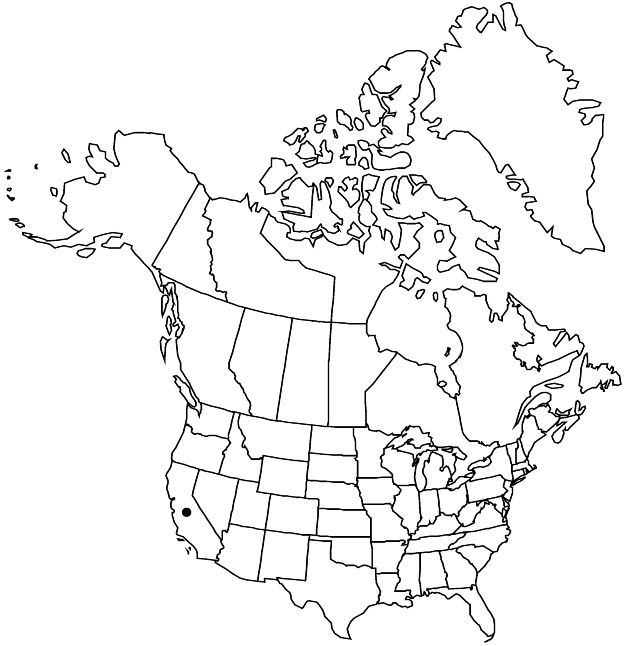Difference between revisions of "Ceanothus papillosus"
Fl. N. Amer. 1: 268. 1838.
FNA>Volume Importer |
FNA>Volume Importer |
(No difference)
| |
Revision as of 18:18, 24 September 2019
Shrubs, evergreen, 1–5 m. Stems erect to ascending, not rooting at nodes; branchlets green to reddish brown, not thorn-tipped, round in cross section, ± flexible to rigid, densely tomentulose. Leaves: petiole 1–3 mm; blade cupped to flat, linear, narrowly oblong, or oblong-elliptic, 12–50 × 6–15 mm, base obtuse to rounded, margins minutely glandular-denticulate, revolute, glands 17–31, apex obtuse, truncate, or retuse, abaxial surface pale green, densely villosulous to tomentulose, adaxial surface dark green, sparsely puberulent and glandular-papillate; pinnately veined. Inflorescences axillary or terminal, racemelike, 2–8 cm. Flowers: sepals, petals, and nectary deep blue. Capsules 2–3 mm wide, lobed; valves smooth, viscid when young, not or weakly crested. 2n = 24.
Phenology: Flowering Mar–May.
Habitat: Rocky ridges, slopes, and flats, chaparral, mixed evergreen forests.
Elevation: 20–1500 m.
Distribution

Calif., Mexico (Baja California).
Discussion
Ceanothus papillosus occurs in the Coast Ranges from San Francisco Bay south to the Santa Ynez Mountains, Ventura County, with disjunct populations in the Santa Ana Mountains, California, and Cerro Bola, in northern Baja California. The name C. papillosus var. roweanus was originally applied to low-growing plants with ascending to spreading, arcuate branches (H. McMinn 1939). M. Van Rensselaer and McMinn (1942) later emended the circumscription to include plants with linear leaves and retuse to truncate leaf apices, but these are found throughout the range of the species. Leaves with obtuse to truncate or retuse leaf apices also can be found on the same plant. Putative hybrids with C. integerrimus and C. oliganthus have been documented (McMinn 1944). Hybrids with C. thyrsiflorus have been named C. ×regius (Jepson) McMinn. Some putatively advanced generation hybrids have narrowly elliptic, weakly papillate leaves with obtuse apices, and sometimes have been misinterpreted as belonging to C. papillosus.
Selected References
None.